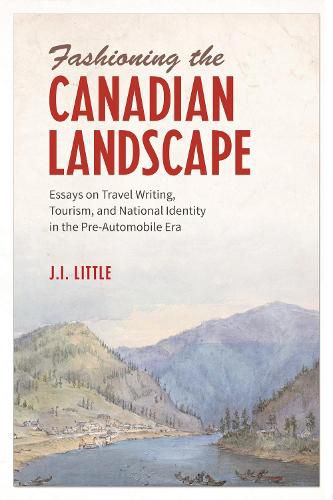Readings Newsletter
Become a Readings Member to make your shopping experience even easier.
Sign in or sign up for free!
You’re not far away from qualifying for FREE standard shipping within Australia
You’ve qualified for FREE standard shipping within Australia
The cart is loading…






Interpretations of Canada’s emerging identity have been largely based on a relatively small corpus of literary writing and landscape paintings, overlooking the influence of the British and American travel writers who published hundreds of books and articles that did much to fix the image of Canada in the popular imagination.
In Fashioning the Canadian Landscape, J.I. Little examines how Canada, much like the United States, came to be identified with its natural landscape. Little argues that in contrast to the American identification with the wilderness sublime, however, Canada’s image was strongly influenced by the picturesque convention favoured by British travel writers.
This amply illustrated volume includes chapters ranging from Labrador to British Columbia, some of which focus on such notable British authors as Rupert Brooke and Rudyard Kipling, and others on talented American writers such as Charles Dudley Warner. Based not only on the views of the landscape but on the racist descriptions of the Indigenous peoples and the romanticization of the Canadian ‘folk’, Little argues that the national image that emerged was colonialist as well as colonial in nature.
$9.00 standard shipping within Australia
FREE standard shipping within Australia for orders over $100.00
Express & International shipping calculated at checkout
Interpretations of Canada’s emerging identity have been largely based on a relatively small corpus of literary writing and landscape paintings, overlooking the influence of the British and American travel writers who published hundreds of books and articles that did much to fix the image of Canada in the popular imagination.
In Fashioning the Canadian Landscape, J.I. Little examines how Canada, much like the United States, came to be identified with its natural landscape. Little argues that in contrast to the American identification with the wilderness sublime, however, Canada’s image was strongly influenced by the picturesque convention favoured by British travel writers.
This amply illustrated volume includes chapters ranging from Labrador to British Columbia, some of which focus on such notable British authors as Rupert Brooke and Rudyard Kipling, and others on talented American writers such as Charles Dudley Warner. Based not only on the views of the landscape but on the racist descriptions of the Indigenous peoples and the romanticization of the Canadian ‘folk’, Little argues that the national image that emerged was colonialist as well as colonial in nature.